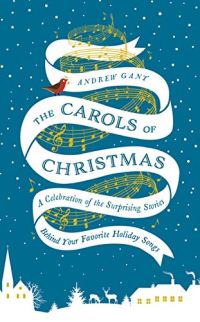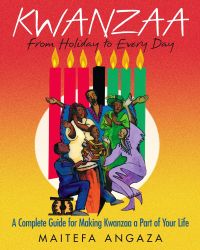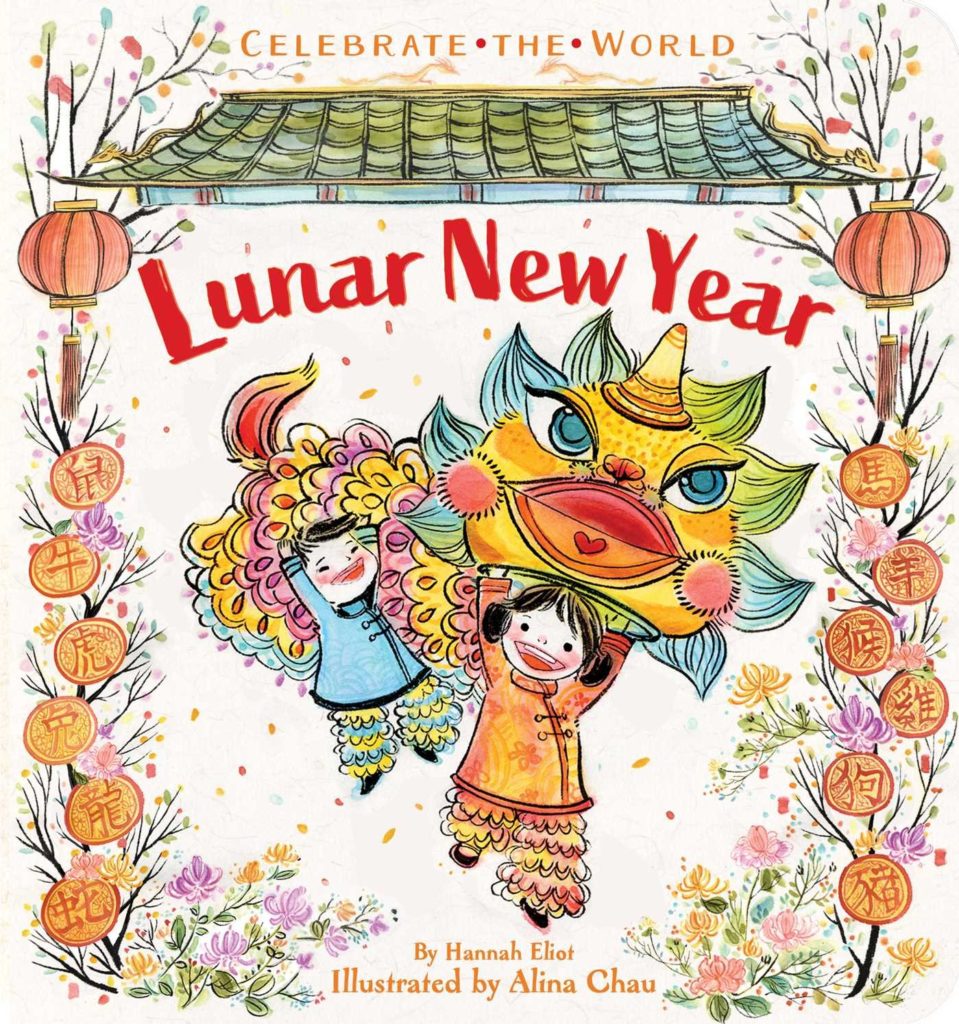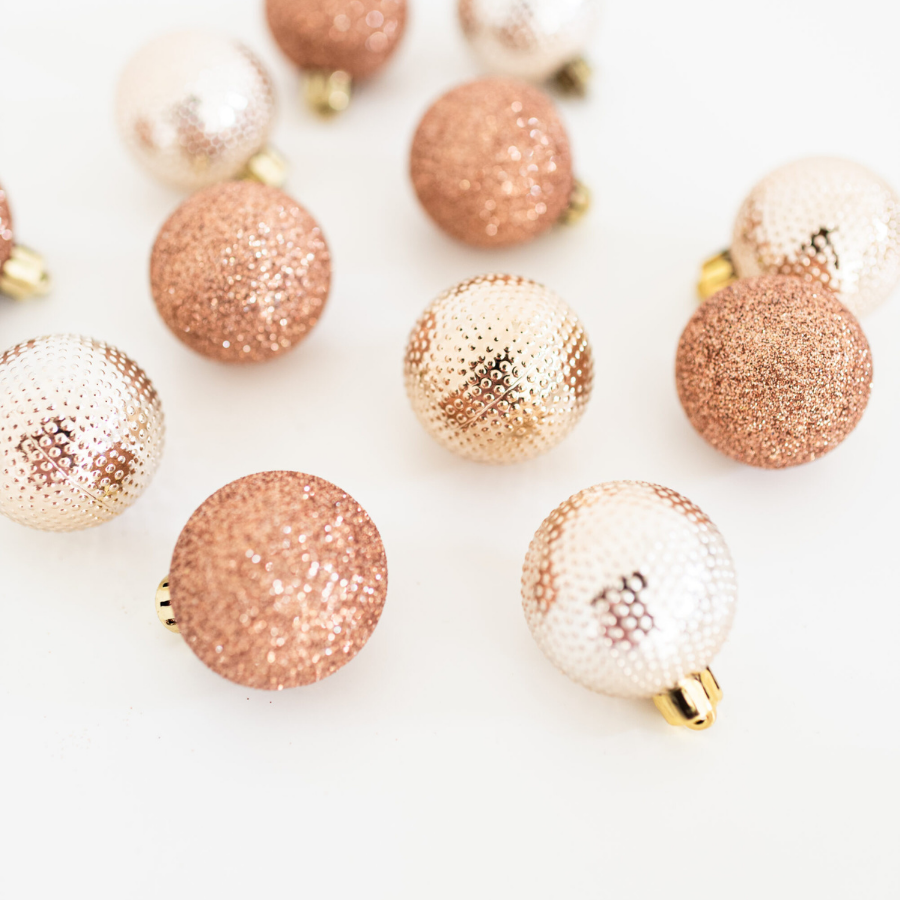As I write this, it is just five days ’til Halloween. Yup. In just five days, I will don my purple demon horns, drag my 7-year-old around the block to collect candy, and then settle down to watch the last episode of Midnight Mass while cursing under my breath every time trick-or-treaters ring my doorbell.
After that, I can go back to never answering my door.
More than a return to glorious solitude, though, the passage of Halloween marks the beginning of all the fun holiday traditions that make winter worth living through. Because I don’t care what you say: Chunky sweaters, knee-high boots, and hot cocoa are not enough.
I know that, for a lot of people, November marks a nightmare hellscape rife with holiday shopping, large-scale menu planning, endless gift wrapping, and a plethora of dysfunctional family gatherings. It’s that for me, too. And I also know that folks tend to place a lot of pressure upon themselves during the holidays, whether in service of their kids, their partners, their extended family, or their friends, colleagues, and other acquaintances.
But shucks. The holidays still feel magical to me and, gosh darn it, I love them.
Part of this is thanks to the overabundance of twinkle lights (give me ALL OF THE TWINKLE LIGHTS!). But, mostly, I’m just a sucker for the holiday traditions I share with my family.
Christmas in the Auteri Household
Every year, the instant December hits, you’ll find me hauling crates upon crates of Christmas decorations up the basement stairs. My daughter and I then proceed to decorate the inside of the house so that it eventually looks like what my brother once described as a spread from the Pottery Barn catalog. I can’t help myself. See the above comment about the twinkle lights.
Anyway, I do all of this while listening to a playlist of holiday songs I put together that, at this point, is 6 hours and 28 minutes long. While Bing Crosby croons about a white Christmas, I hang stockings over the bay windows. While Enya asks, “What child is this?” I scatter snow globes across shelves and tables. And while Mariah Carey tells us that all she wants for Christmas is me (I can’t blame her), I follow the example of my mother by overseeing the trimming of the tree with an iron fist, large ornaments near the bottom, small ornaments near the top, and all of them hanging freely, goddammit.
My husband hates all of this.
Still, I force him to go out into the cold and put up all of the outside lights. This involves him climbing up a very tall ladder, clambering up onto the roof, and courting death all to hang a large, light-up wreath. The acquisition of said wreath was the fulfillment of a lifelong dream of mine.
December also means baking. Growing up, my entire family — me, my brother, and both parents — always baked five different varieties of cookies together: cookie bars, magic cookie bars, crescents, butter cookies in a variety of holiday shapes, and tassies. We still do this and if a year were to pass in which I did not end up with at least one batch of tassies all to myself, it would be a very dark year indeed.
Later on, as we inch closer toward Christmas, we set aside an evening during which we drive around to see everyone else’s outdoor light displays. I remember my parents driving me and my brother around when we were young. We’d roll in a slow crawl past the most elaborate displays, our faces pressed to the windows, the holiday tunes playing in a 24/7 loop on Lite FM. Now, my husband and I take our daughter out, first stopping at a friend’s local coffee shop to listen to live music and grab hot cocoas and peppermint lattes for the road.
One of my favorite holiday traditions, however, is the singing of the “Hallelujah Chorus,” perhaps the most well-known part of Handel’s Messiah. I was raised Roman Catholic and, after college, joined my church choir. On Christmas Eve (and three more times on Christmas morning), we’d end mass by singing the Chorus, belting out the repeating phrases, the notes thrumming in our chests and echoing out across the nave. By the final “Hallelujah,” the congregants would be on their feet, necks craning to look into the choir loft. It always made me cry.
I’m no longer in that choir, but I still like to keep an eye out for churches that host public singalongs of the Messiah in December.
And of course, there’s the letter my daughter leaves for Santa. The milk and cookies. The one apple that all the reindeer are expected to fight over. The grand reveal on Christmas morning. Exchanging gifts with family. (My mom still has scraps of the wrapping paper she once used on the gifts that were from Santa; she now hides those scraps on our regular gifts, a single piece of Santa’s mitten, for example, blending in with a reindeer nose.)
Where would we be without all of these tiny rituals? Which ones will my daughter carry into her future?
Holiday Traditions Across the Feminist Book Club Team
As essential as my family’s traditions are to me, I know that not everyone frolics their way through the holidays in exactly the same way.
When I asked my fellow FBC-ers what they do at this time of year, I got a wide variety of responses that ended up making me super hungry.
“My family and I make tamales every Christmas,” said Sarah Hernandez, our new admin assistant. “We make stacks of them to last for days. Tamale season is always the best season.” (I’ll bet it is.)
Blog contributor Yasi Agah focused on her family’s Thanksgiving spread. “My fam always gets together for Thanksgiving and does a mix of traditional food (turkey, mashed potatoes, all that jazz) and Persian food (lots of meat kebabs, rice, and stews)!” she said.
Our Blog Editor in Chief Natalia Santana-Pollard makes Cuban Steak sandwiches on Christmas Day, the thought of which makes my mouth water. “On Christmas Eve,” she said, “we celebrate with a HUGE dinner that includes roasted pork, several types of rice, and the Dominican equivalent of tamales called pastel en hoja made out of grated plantains. This year — our second away from Florida — I’m going to attempt to make them myself to keep the tradition going for my girls.”
And not all holiday traditions revolve around food (though if you take away my stuffed artichokes and my spinach balls, I will cut you). Our CEO and Founder Renee M. Powers mentioned that she and her partner decorate their tree while watching Elf. “We can both recite the whole movie by heart,” she said.
Similarly, blog contributor Nina Garcia shared that she, her husband, and her kiddos put up their Christmas tree on the evening of Thanksgiving, the first Christmas movie of the season playing in the background while they work.
And Natalia mentioned that, on Halloween, they rewatch Over the Garden Wall after trick-or-treating and, on the Wednesday before Thanksgiving, she takes her girls on a hike while her husband is working. “We call it Walking Wednesday!” she said. “I love holiday traditions even though I hate the holidays.”
And I think many of us feel that. The holidays can be a time of stress and overwhelm, but traditions can be a way to reconnect as a family or as a community, in a way that carries special meaning and that honors identity and heritage.
I am so fascinated by the rituals we engage in, the ones that come from cultural or religious upbringings or from family, and the ones we create for ourselves.
Holiday Traditions Across Faiths and Cultures
If you’re a nerd like me, I invite you to check out the books below, which give a glimpse of the traditions at the heart of various winter holidays.

I’ll start with Christmas, the annual Christian festival celebrating Christ’s birth, because it’s the one I celebrate. For a sociological exploration of the holiday’s humble beginnings all the way through to its present-day traditions, there’s Judith Flanders’ Christmas: A Biography. And because I’m a singer, I’m going to give a shout-out to Andrew Grant’s The Carols of Christmas: A Celebration of the Surprising Stories Behind Your Favorite Holiday Songs.
Next, we’ll move on to Yule, the Pagan and Wiccan celebration of the winter solstice, the shortest day of the year. Why celebrate a day that contains the least amount of sunlight? In many forms of Wicca, the winter solstice is seen as the rebirth of the great horned hunter god, a manifestation of the newborn solstice sun. Learn more by reading Susan Pesznecker’s Yule: Rituals, Recipes & Lore for the Winter Solstice and Linda Raedisch’s The Old Magic of Christmas: Yuletide Traditions for the Darkest Days of the Year. Candles, feasts, and invocations abound.
Don’t worry. I haven’t forgotten about Hanukkah, the eight-day Jewish festival commemorating the recovery of Jerusalem and the subsequent rededication of the Second Temple at the beginning of the Maccabean revolt against the Seleucid Empire in the 2nd century BCE. You can read more about the history and traditions of the holiday from our guest contributor Matilda here. Besides her excellent suggestions, you can also turn to George Robinson’s Essential Judaism: A Complete Guide to Beliefs, Customs & Rituals and Rabbi Joseph Telushkin’s Jewish Literacy: The Most Important Things to Know About the Jewish Religion, Its People, and Its History.

Also occurring in late December is Kwanzaa, a secular celebration observed by many African Americans as a way to honor their cultural heritage and traditional values. Running from December 26 to January 1, it typically culminates in a communal feast called Karamu. In Maitefa Angaza’s Kwanzaa: From Holiday to Every Day, you can learn how to apply the seven principles of the holiday to your everyday life. In addition to the seven principles, the book contains information about Karamu, recipes for traditional dishes, popular songs, and more.
A bit earlier on in the season is Diwali, a Hindu festival of lights meant to symbolize the victory of light over darkness, good over evil, and knowledge over ignorance. While Rina Singh’s Diwali: Festival of Lights is meant for younger readers, I can’t resist the vibrant photographs and the wealth of information on the festival’s various rituals (including recipes!).

And there are other holidays for which I had a tough time finding books meant for adult readers but, my god, if you have some young ones at home, why not learn together? For example, Ewa Rydaker and Carina Stahlberg’s Lucia Morning in Sweden tells of St. Lucia Day, a Swedish holiday that takes place on December 13 and honors both the beginning of the Christmas season and the memory of St. Lucia, a martyr who was said to have brought food and aid to Christians hiding in the Roman catacombs while wearing a candlelit wreath on her head to light her way. Books like Tomie dePaola’s The Night of Las Posadas and Marie Hall Ets and Aurora Labastida’s Nine Days to Christmas: A Story of Mexico tell of Las Posadas, a religious festival that runs from December 16-24, commemorating the journey Joseph and Mary made from Nazareth to Bethlehem in search of a safe refuge so that Mary could give birth to the baby Jesus. And then there are books like Lunar New Year by Hannah Eliot and Alina Chau, and Ruby’s Chinese New Year by Vickie Lee and Joey Chou, which tell of the festival that, on February 1, celebrates the beginning of the new year on the traditional lunisolar Chinese calendar.
Of course, some of us avoid the holidays entirely. But that doesn’t mean we can’t create traditions that are just as important to us and to our families.
I remember when we spoke with Robin Wall Kimmerer after reading Braiding Sweetgrass, and the topic of ritual came up within the context of cultural support and appreciation versus cultural appropriation. At the time, Kimmerer encouraged us to look within our own backyards, to find meaning in the milieu of our own lives, rituals that honored our values. It felt beautiful to me to imagine the quiet moments we could each create for ourselves out of the raw material of our day-to-day.
If you’re looking to bring ritual and meaning to your life, you may want to check out Meg Cox’s The Book of New Family Traditions: How to Create Great Rituals for Holidays and Every Day.
Or maybe you already have everything you need. In the small habits you’ve acquired. In the tiny rituals that have come to feel like a given.
How do you honor your heritage during these winter months?

